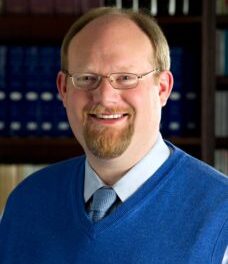In these hard times, thrifty music lovers ought to avail themselves of the free or nominally priced concerts given by the student orchestras of our local universities. Music Directors Tonu Kalam at the University of North Carolina and Harry Davidson at Duke University regularly field orchestras consisting of 100 or more players.
Our fine professional regional and metropolitan orchestras could not afford to staff in these numbers in the best of times.
Much of Harry Davidson’s recent season with the Duke Symphony Orchestra in Baldwin Auditorium has been taken up celebrating the 200th anniversary of Felix Mendelssohn’s birth. For this concert, he chose to honor the 350th anniversary of Henry Purcell’s birth, the 250th anniversary of George Frederic Handel’s death, and the 200th anniversary of Franz Joseph Haydn’s death. Since he has programmed a symphony by Ludwig van Beethoven (1770-1827) every other year, Davidson capped his evening with the composer’s monumental Fifth Symphony.
The rise of crack chamber orchestras such as I Musici or the Academy-of-Saint-Martin-in the-Fields and the Early Music Movement represented by such groups as the English Consort in the 1960s scared off much of the baroque repertoire from the programming of mainstream orchestras. Although Davidson reduced his forces by at least a third, he still used larger forces for the first half of the concert than is common on recordings or in touring ensembles.
Henry Purcell (1659-95) was the greatest English composer before a long fallow period that lasted until the twentieth century. His Chacony in G minor for strings was probably composed for the court’s violin band known as the Twenty-Four Violins. It is a superb example of ostinato variations, growing in power with each repeat of the same eight-measure phrase. The young musicians produced a full, rich string sound as they played with tight ensemble and fine intonation. They responded instantly to Davidson’s subtle adjustments in dynamics.
The Concerto Grosso in C, “Alexander’s Feast” (1736), by Handel (1685-1759) gave Davidson the opportunity to bring in guest soloists to play the virtuoso concertino group parts set against the ripieno group of the orchestra’s strings. The distinguished and skilled soloists were violinists Hsiao-Mei Ku of the Ciompi String Quartet and Frances Hseih, a former student concertmistress of the Duke symphony and an active professional in the Charleston, SC and Asheville Symphony Orchestras and cellist Darrett Adkins making a welcome return to Duke. The Duke string players were joined by two oboes, bassoon, and Jim Chou on harpsichord continuo. Davidson and his players fitted around the concertino soloists’ playing like a glove with the give-and-take of a much smaller force. Ku and Hseih blended beautifully and their independent lines were gorgeous. Adkins and Chou were particularly fine in the slow movements. The harpsichord did not appear to be amplified but was easily heard in the balcony.
Cellist Darrett Adkins was last heard with the Duke Symphony in the Shostakovich First Cello Concerto (October 4, 2006). His reputation has been built upon contemporary music so it was a great treat to hear him take on the classical repertoire in the form of the Cello Concerto No. 2 in D Major, Op. 101 (1783) of Franz Joseph Haydn (1732-1809). Until its manuscript was rediscovered in 1954, this concerto was believed to have been composed by Haydn’s cellist Anton Kraft. Cellist Anner Bylsma, in notes for his Deutsche Harmonia Mundi recording, speculates a sort of “creative symbiosis” between composer and soloist as the best explanation for elements of both composers’ styles in the piece. Adkin’s performance was simply breath-taking, his intonation was flawless and his articulation of the fastest passages was amazing. He produced a sweet, warm tone. This was a vital model of playing in classical style with no hint of sentimentality. The accompaniments by Davidson and his players, with added horns and oboes, were very fine.
The very well-known Symphony No. 5 in C minor, Op. 67 (1808) by Beethoven was given a dynamic and vital interpretation by Davidson and his large orchestra. The first horn solo was nailed perfectly by the student player and the horn section was superb in the last two movements. What a thrill to hear all sixteen student cellists, plus Adkins on a back stand, dig into the opening of the second movement! Trumpets glowed in this movement and the trombones strutted their stuff in the finale. The wonderful transition between the third and fourth movement was beautifully judged and executed. Bravo!











